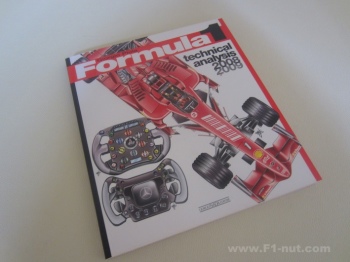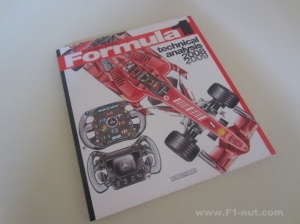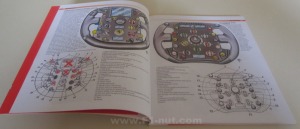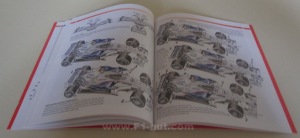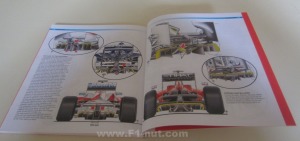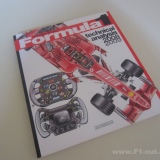
Book Review: Formula 1 Technical Analysis 2008-9 by Giorgio Piola
Positives
Negatives
On the chassis front, 2014 offered a variety of different design interpretations that hasn’t been seen for quite a few seasons, since probably 2008 (co-incidentally the year of Lewis’ first WDC title). In terms of design, 2008 was a favourite of mine because of the massive aero appendages and the aggressive styling of all the […]
On the chassis front, 2014 offered a variety of different design interpretations that hasn’t been seen for quite a few seasons, since probably 2008 (co-incidentally the year of Lewis’ first WDC title). In terms of design, 2008 was a favourite of mine because of the massive aero appendages and the aggressive styling of all the cars. Rather than the usual Autocourse annuals, my favourite season review book is the 2008-2009 Formula 1 Technical Analysis by Giorgio Piola. If you visit the official Formula 1 website, you will instantly recognise Giorgio’s regular artwork capturing each team’s technical design updates through the F1 racing season.
The book is structured into 11 chapters which opens with a brief overview of the 2008 season and side profiles of each of the team cars. The next chapters then deal with:
- chassis history (parts specs and lots and lots of stats – DNFs, etc and summaries of the Ferrari F2008 and McLaren MP4/23 2008 chassis)
- engines (nice diagram of the 111 degree Renault)
- regulation changes (with a detailed comparison of the 2007 and 2008 Ferrari steering wheel)
- aerodynamics (close look at the various aero designs of each team – remember the Williams walrus tusks, BMW viking horns, Honda’s rabbit ears, Red Bulls shark’s fin?)
- tyres and brakes
- cockpits and steering wheels
- suspension
- detailed look at each team’s chassis development
- 2009 season (a quick look at the Brawn and Toyota double diffuser)
The yearbook is fantastic compilation of diagrams illustrating every team’s key development updates from race to race.
There is a mixture of computer CAD illustrations and hand drawings but the CAD diagrams look a little 2 dimensional.
These yearbooks are highly recommended to technically oriented F1 fans and also fans who generally love technical design artwork. Piola’s book manages like no other book to capture the incremental season developments.
I’ve yet to see the 2013-2014 edition but based on past editions, I’ve got no doubts this year’s book will be an excellent technical overview of the season.
Wow factor or Money Shot: This packs in both 2008 and 2009 seasons but the indepth look at the Ferrari F2008 is a visual treat.
Suitable for: F1 technical and stats nuts

